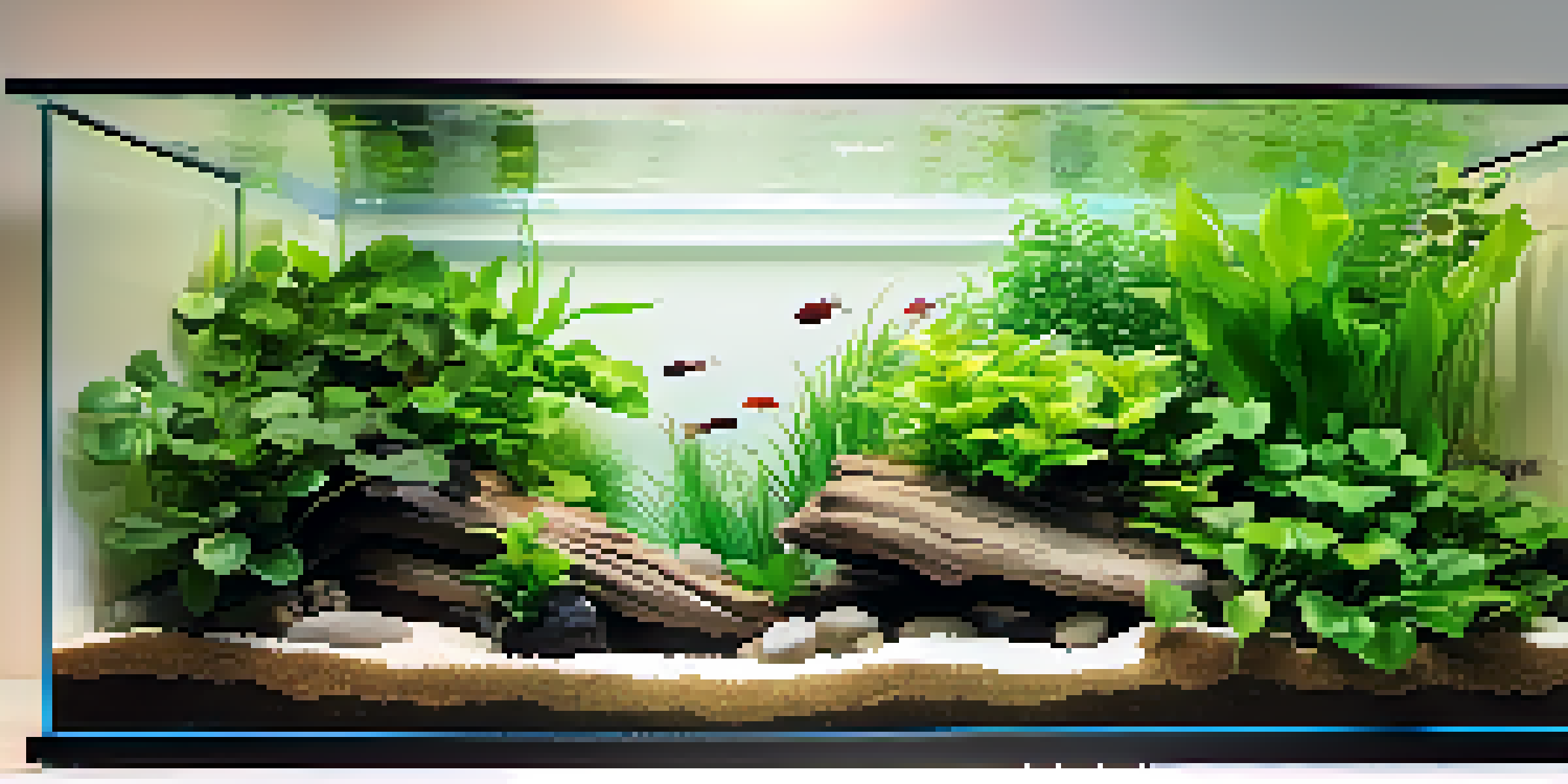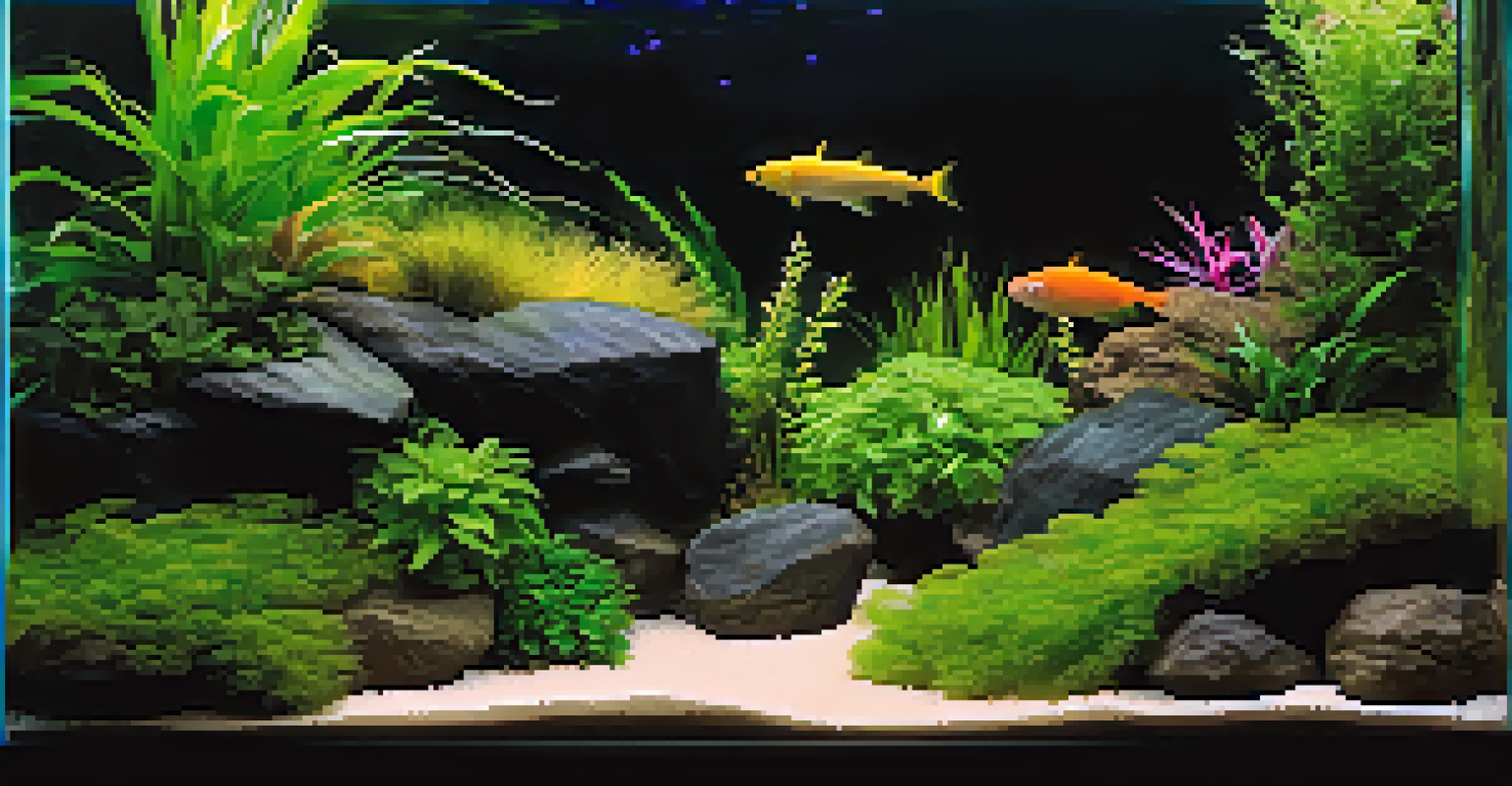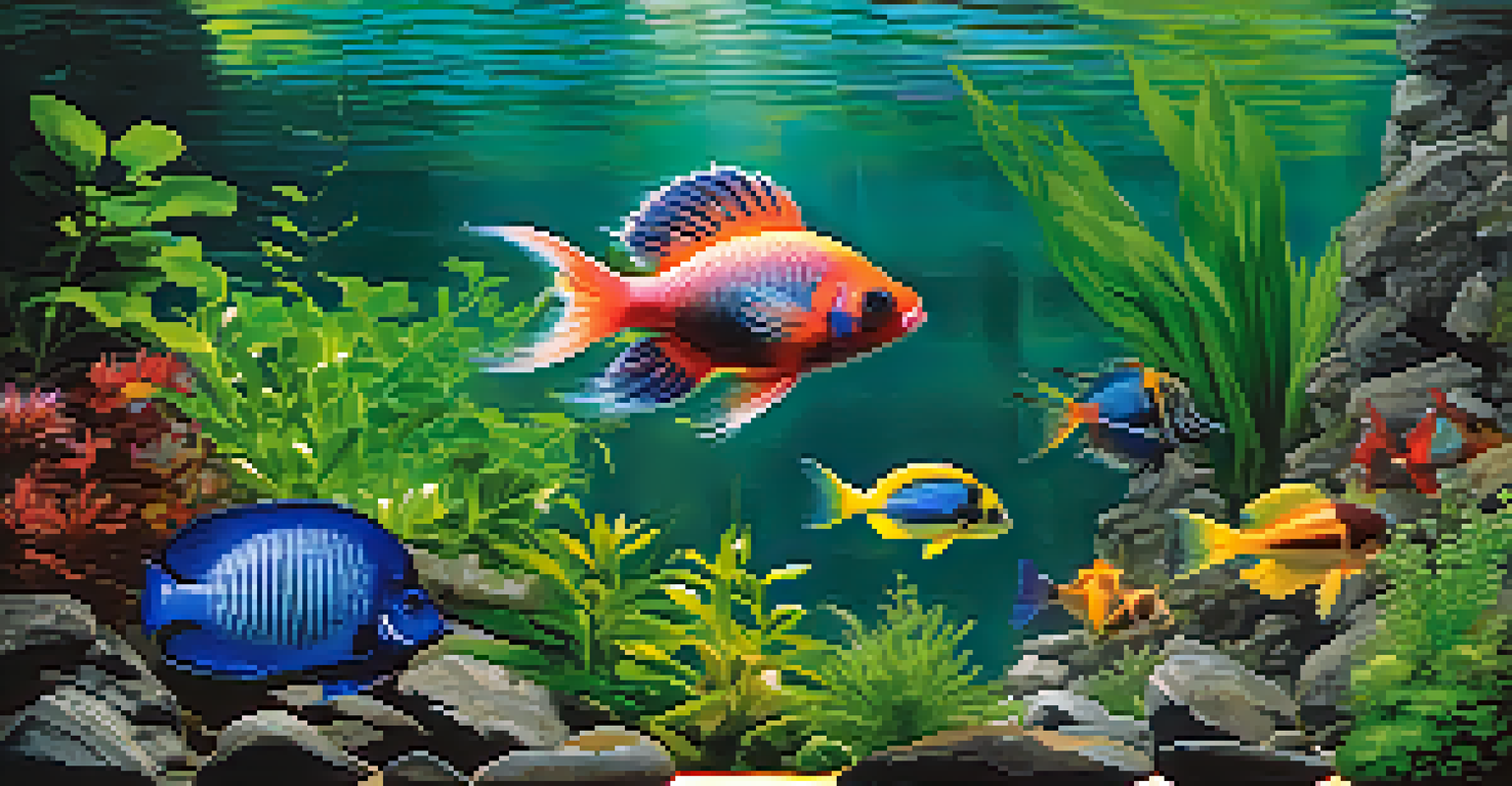Understanding the Basics of Aquascaping for Beginners

What is Aquascaping and Why Should You Try It?
Aquascaping is the art of creating beautiful underwater landscapes in aquariums. Think of it as gardening, but under the water! It's not just about placing plants and rocks; it's about creating a serene environment that mimics nature.
Aquascaping is like painting with water, creating a living canvas that evolves over time.
Many people find aquascaping therapeutic, as it combines creativity with the calming effects of water. You can express your artistic side while nurturing a living ecosystem, making it a rewarding hobby.
If you love nature and want to bring a piece of it into your home, aquascaping is an excellent way to do so. It's suitable for all ages and skill levels, so why not dive in and explore this fascinating world?
Essential Tools and Supplies for Aquascaping
To get started with aquascaping, you'll need some basic tools and supplies. This includes an aquarium tank, substrate (the material that covers the bottom), and a variety of plants and decorations like rocks or driftwood.

Don’t forget about equipment such as a filter and heater to maintain water quality and temperature. A good lighting system is also crucial, as it helps your plants thrive and enhances the visual appeal of your aquascape.
Aquascaping: An Artistic Journey
Aquascaping combines creativity with nature, allowing you to express your artistic side while nurturing a living ecosystem.
Investing in quality tools will make the process smoother and more enjoyable. Over time, you might even find yourself collecting more specialized tools as you develop your skills!
Choosing the Right Aquarium Size for Your Space
When it comes to aquascaping, the size of your aquarium matters. A smaller tank might be easier to manage for beginners, while larger tanks offer more room for creativity. Consider your available space and how much time you can dedicate to maintenance.
The beauty of aquascaping lies in its ability to blend art and nature into a single breathtaking experience.
Larger aquariums can create more dramatic landscapes, but they also require more upkeep, such as regular water changes and algae control. On the other hand, a smaller tank may limit your design options but can still be stunning with the right approach.
Ultimately, choose a size that fits comfortably in your home and aligns with your lifestyle. Remember, it's all about enjoying the process and creating something beautiful.
Selecting Plants for Your Aquascape Design
Choosing the right plants is a fundamental step in aquascaping. There are countless aquatic plants available, each with different growth patterns and care requirements. Start with easy-to-maintain varieties like Java Fern or Anubias if you're just beginning.
Consider the height, color, and texture of the plants, as these elements will influence the overall look of your aquascape. Layering different plants can create depth and interest, mimicking the natural environment.
Essential Tools for Beginners
Starting aquascaping requires basic tools like an aquarium, substrate, plants, and necessary equipment to create a thriving underwater landscape.
Don't hesitate to mix it up! Experimenting with various plants can lead to exciting discoveries and unique designs. Just be sure to research their compatibility with one another to ensure a thriving ecosystem.
Hardscape Elements: Rocks, Driftwood, and Layout
Hardscape elements like rocks and driftwood are the backbone of your aquascape design. They provide structure and contrast to the greenery, helping to create visual interest. When choosing hardscape materials, consider their shape and color, as these features will impact your overall aesthetic.
Layout is crucial in aquascaping. Think about the rule of thirds or the golden ratio to create a balanced composition. A well-planned layout draws the eye and invites exploration, making your aquascape even more engaging.
Experimenting with different configurations can be fun! Don’t be afraid to rearrange your hardscape until you find a layout that feels just right. Remember, it’s all part of the creative journey.
Maintaining Your Aquascape for Long-Term Success
Maintenance is key to keeping your aquascape thriving. Regular tasks include water changes, trimming plants, and cleaning the substrate to prevent algae build-up. It might seem daunting at first, but developing a routine will make it easier over time.
Testing water parameters, such as pH and ammonia levels, will help you ensure a healthy environment for your aquatic life. Investing in a good water testing kit can pay off in the long run, preventing potential issues.
Maintenance Ensures Long-Term Beauty
Regular maintenance, including water changes and plant trimming, is crucial to keeping your aquascape healthy and visually stunning.
Remember, patience is essential in aquascaping. As the plants grow and the ecosystem stabilizes, you'll see your hard work pay off with a stunning, lush aquascape.
Incorporating Fish and Other Aquatic Creatures
Once your aquascape is established, you might be tempted to add fish or other aquatic creatures. Choosing the right species is crucial, as some fish may not thrive in heavily planted environments. Research compatible species that complement your plants and overall design.
Start with a small number of fish to avoid overcrowding and ensure a balanced ecosystem. As you grow more comfortable, you can experiment with different species and create a vibrant underwater community.

Remember, aquatic life can significantly influence your aquascape. Observe how they interact with the plants and each other, and be ready to make adjustments if needed. The beauty of aquascaping is that it's a dynamic, ever-evolving art!